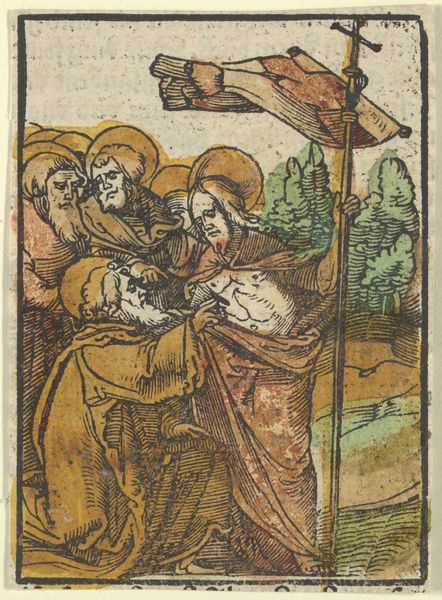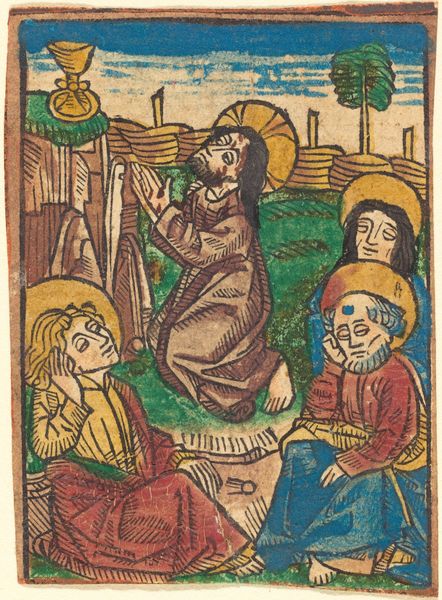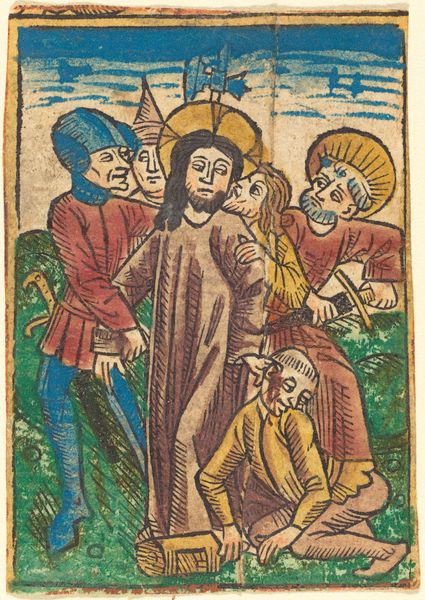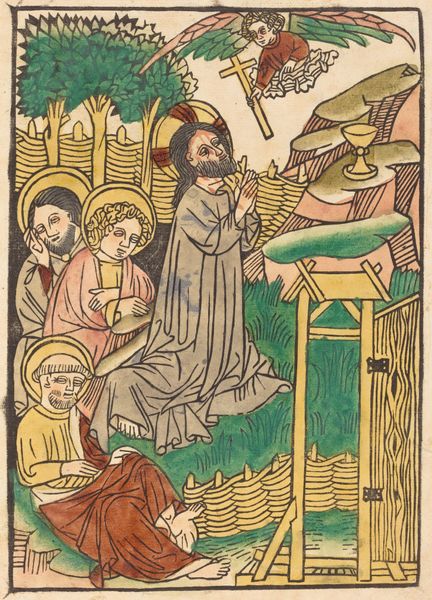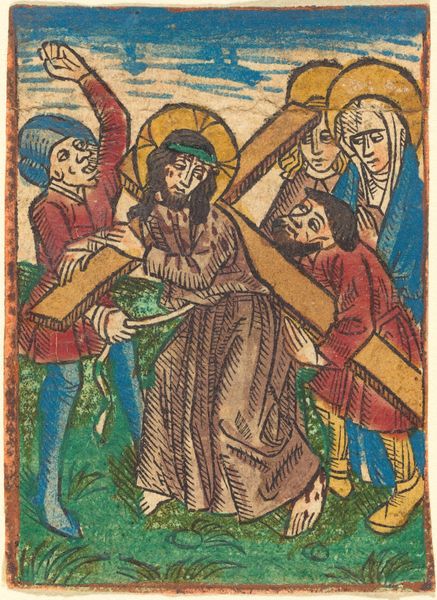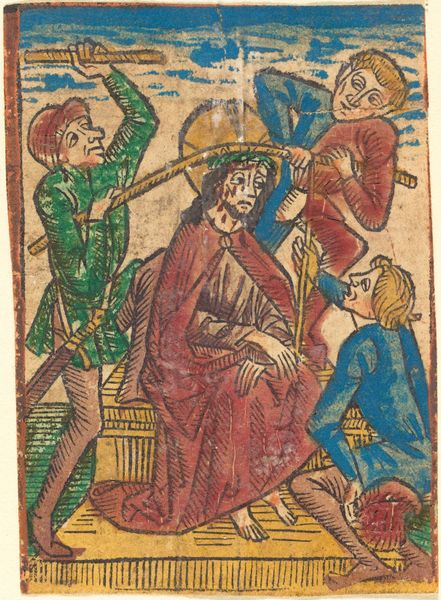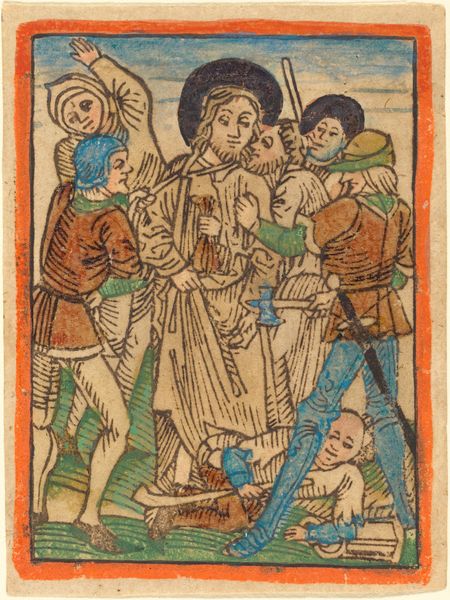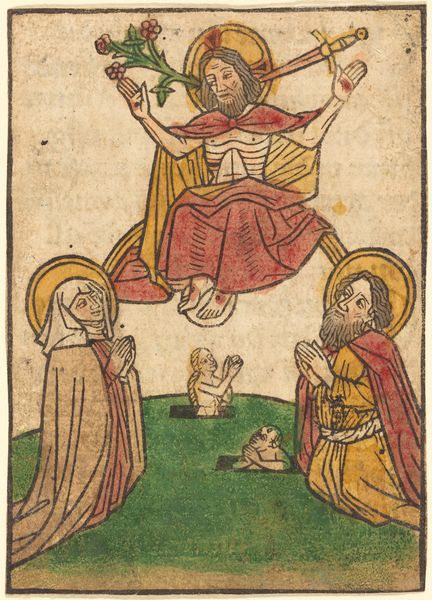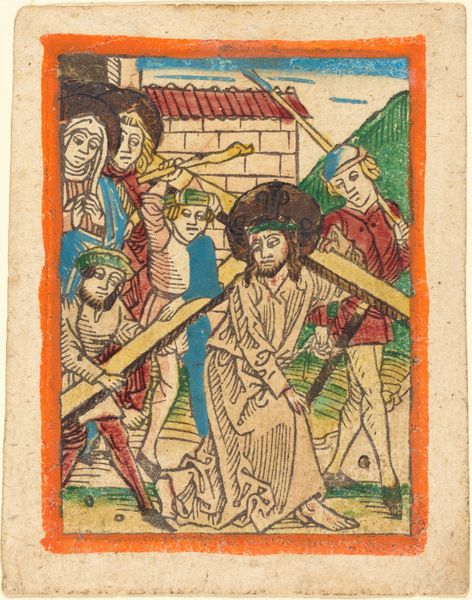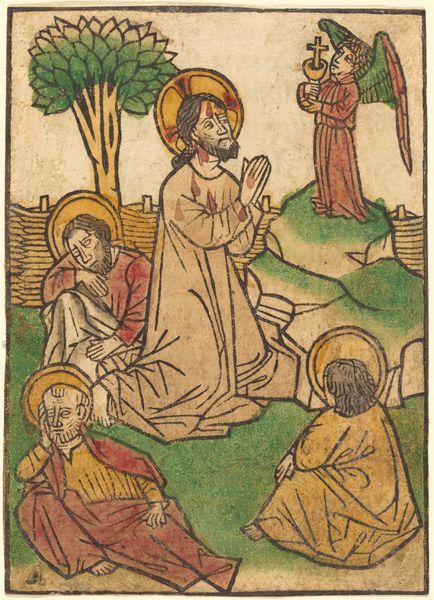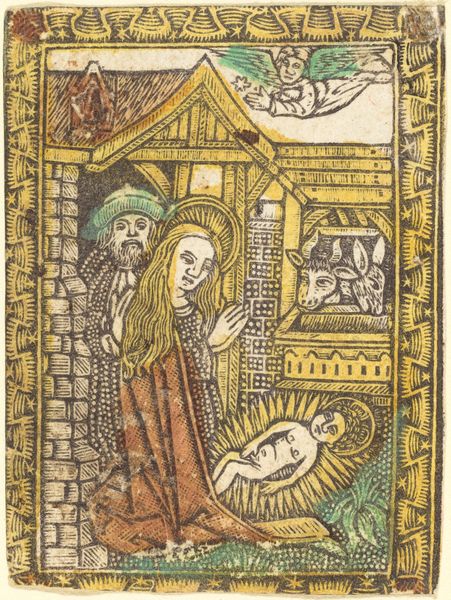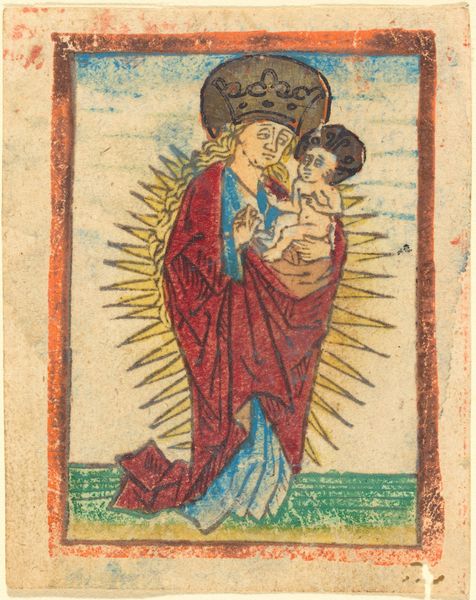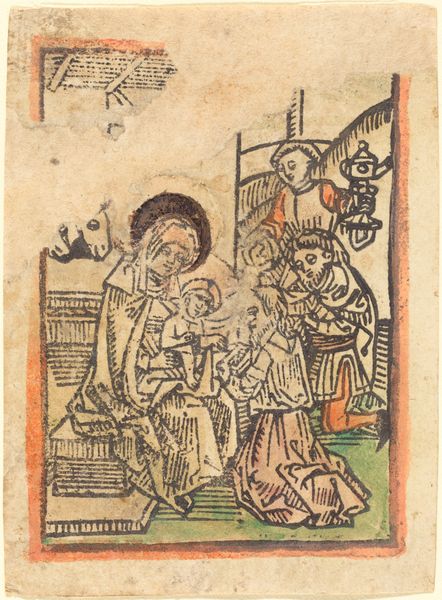
drawing, coloured-pencil, print
#
drawing
#
coloured-pencil
#
narrative-art
# print
#
landscape
#
coloured pencil
#
folk-art
#
naive art
#
watercolour illustration
#
genre-painting
#
northern-renaissance
Copyright: National Gallery of Art: CC0 1.0
Curator: Here we have an early print from around 1490 depicting "The Flight into Egypt," an iconic subject in Christian art. Notice how it’s been rendered with coloured pencil, giving it a vibrant yet humble quality. What are your first thoughts? Editor: Immediately, I'm struck by the spatial naiveté. There's a clear lack of perspective, the figures seem somewhat flattened against the landscape. Yet, the color choices are surprisingly bold for the period. Curator: Indeed. The lack of perfect perspective speaks to a different understanding of representation. It prioritizes clarity of symbolic narrative over realistic depiction. Take Mary's halo, for example, it declares her sacred status, immediately positioning her and the Christ child within a divine framework. The colors also play a symbolic role. Editor: True. We see reds associated with royalty, blues for the heavens… though the application is somewhat rudimentary. It is more "naive" in its approach. Curator: But that's where its power lies. The artist, whose name is unfortunately lost to us, isn’t trying to create an illusionistic masterpiece, but rather to communicate a vital spiritual truth with familiar, folk-art visual vocabulary. The story becomes readily accessible, reinforced by well-established, familiar imagery. Joseph’s staff, Mary's downcast expression…they resonate on a very human level. Editor: I agree that it's readily accessible. Formally, I can also see an emerging appreciation of landscape—the suggestion of hills in the background and the simple tree adds to a compositional interest outside the immediate figures. However, one could still argue for an evolution from illuminated manuscript tradition rather than a full embrace of the burgeoning Renaissance ideals. Curator: And perhaps that is the beauty of this work; a point of transition, embracing aspects of both the medieval symbolic world and the coming interest in more earthly observation. It speaks to the enduring human need for spiritual narratives visualized in accessible forms. Editor: It’s a simple image that speaks volumes about a complex transition, using shape and colour. I am captivated.
Comments
No comments
Be the first to comment and join the conversation on the ultimate creative platform.
